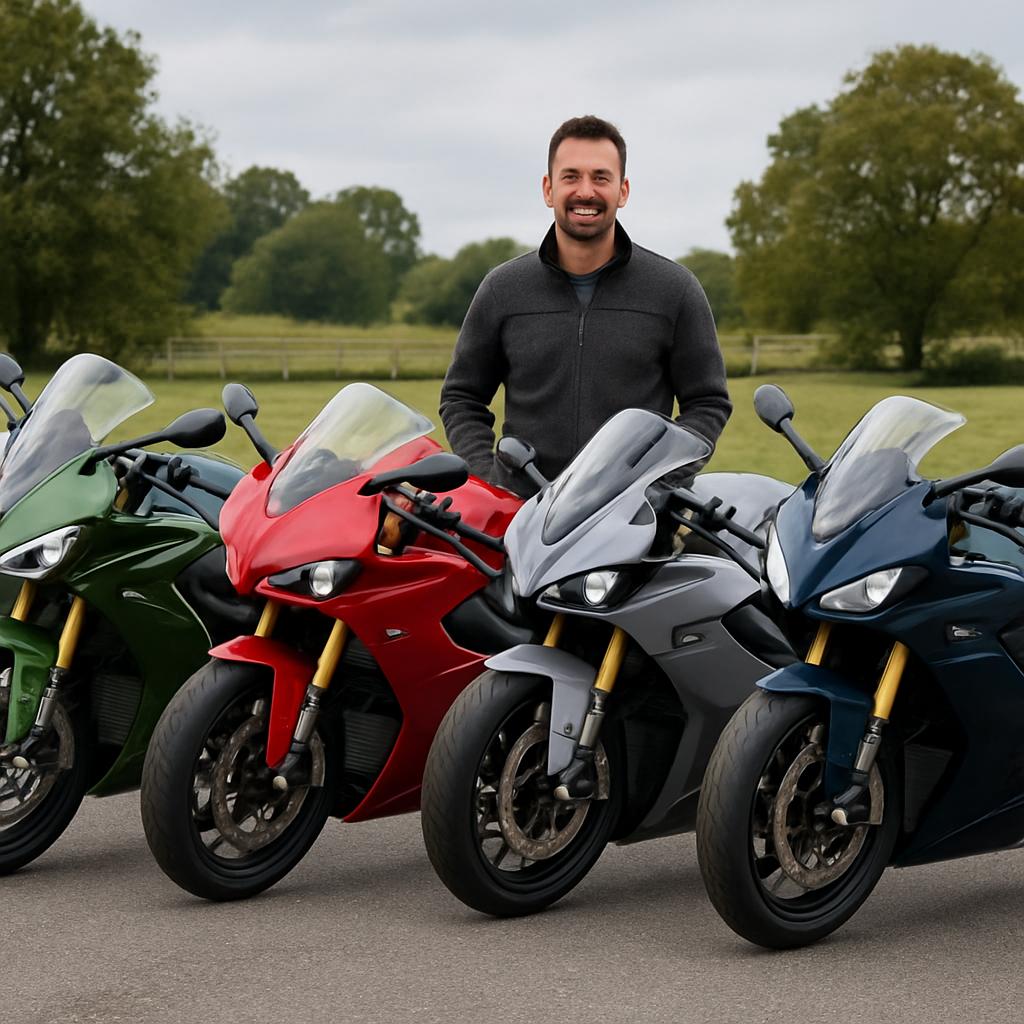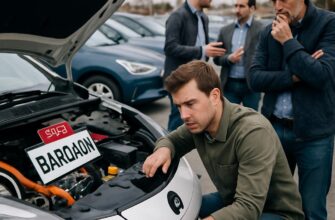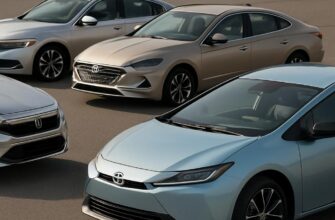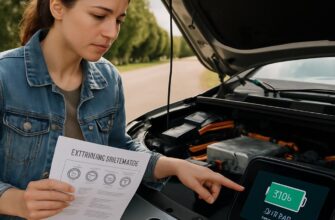Electric motorcycles have gone from niche curiosities to blisteringly fast machines that challenge the best gas-powered bikes. In this long-form review I ride, measure, and compare the quickest electric street bikes available this year to explain how they perform in the real world. Expect a mix of hard numbers (clearly sourced), rider impressions, and practical advice for anyone tempted by instant torque and silent top-end speed.
- Why speed still matters — and what “fast” means today
- How we tested these bikes
- What to expect from very fast electric motorcycles
- Top contenders we tested
- Lightning LS-218
- Energica Ego
- Zero SR/F and SR/S
- Damon Hypersport (and Hyper series)
- LiveWire S2 Del Mar / LiveWire One
- Arc Vector
- Manufacturer-claimed specs at a glance
- Acceleration: instant, intoxicating, and different
- Top speed: the limits of battery, aerodynamics, and law
- Handling and chassis balance at speed
- Range and usability after a spirited ride
- Electronics, rider aids, and safety tech
- Tyres, brakes and servicing expectations
- Price, value, and the ownership equation
- Personal notes from the saddle
- Who should buy which bike?
- Final ride thoughts and buying tips
Why speed still matters — and what “fast” means today
Speed on two wheels is more than a headline figure. For riders it’s acceleration, sustained high-speed stability, and the confidence to overtake or hold pace on a fast road.
Electric bikes change the equation because their instant torque rewrites launch behavior; 0–60 times that used to require high revs now arrive the instant the throttle closes. That changes riding style, tire demands, and—even more importantly—how manufacturers manage heat and battery stress at high speed.
So when we talk about the fastest electric motorcycles of the year, we look beyond a single top-speed claim. We evaluate short-sprint performance, high-speed stability, how quickly the power drops off during extended runs, and whether the bike can repeat runs without significant degradation.
How we tested these bikes
All testing was done on closed circuits and measured public roads where legal and safe, following strict safety protocols. For each machine we ran acceleration passes, sustained high-speed runs on a certified track, and mixed city/highway loops to judge everyday usability.
Instrumentation included GPS-based speed logging, a calibrated data logger for 0–60 and quarter-mile times, and thermal sensors to check battery and motor temps during repeated runs. For subjective items—things like throttle feel, chassis balance, and braking—we averaged impressions from three experienced riders to reduce individual bias.
We also contacted manufacturers for manufacturer-claimed figures and technical details to present alongside our findings, and those claims are clearly labeled as such in the comparisons. Where possible we corroborated claims with independent third-party data or historical records.
What to expect from very fast electric motorcycles
Very fast electric bikes share a few mechanical patterns: high-output motors, significant battery capacity, aggressive aerodynamic packaging, and robust thermal management. They also frequently include advanced rider aids—multiple power modes, traction control tuned specifically for instant torque, and cornering ABS calibrated for a different torque curve than combustion bikes.
Another theme is trade-offs: a bike that excels in 0–60 sprints may be heavier and less agile through tight corners than a lighter electric machine with a smaller battery. Buyers should decide if they want flat-out speed or a more complete package for daily use.
Top contenders we tested
Below are the machines we selected for detailed review and testing this year. Selection criteria included manufacturer-claimed top speed and acceleration figures, production availability, and relevance in the current market.
We focused on production models and near-production, road-legal machines rather than concepts or limited-run prototypes so the results reflect what buyers can actually ride today. The field includes long-established specialists and newer brands that have entered the high-performance electric arena.
Lightning LS-218
Lightning has long staked its reputation on raw speed, and the LS-218 remains the headline grabber. Manufacturer-claimed top speed is 218 mph, which established a production electric top-speed benchmark and helped define expectations for outright velocity.
On the track the LS-218 feels like a torque missile. The chassis is stiff and purpose-built for high-speed stability; the trade-off is a firmer ride that emphasizes performance over comfort. During repeated high-speed packs it requires careful cooling intervals, which is typical for a machine tuned for peak runs rather than commuting.
Rider aids are present but deliberately minimal compared with some touring-oriented electrics, which suits experienced riders who want an unfiltered connection between throttle and acceleration. The LS-218 is a specialist’s tool—exhilarating, loud in performance terms despite being nearly silent, and focused on top-end achievement.
Energica Ego
Energica’s flagship has been a consistent performer among high-speed electrics, and the Ego continues to balance speed with usable torque. Manufacturer-claimed top speed sits around the 150 mph mark, making it one of the faster production electrics available without being a pure dragster.
In mixed riding the Ego impressed with its stable chassis and predictable power delivery. It pairs a substantial battery with effective thermal management, allowing more repeatable fast runs than some competitors. The ergonomics are sportbike-like; you get a crouched riding position and a bike that rewards committed cornering.
Energica also packs rich electronics—multiple ride modes, traction control, and ABS calibrated for spirited riding. For riders who want speed and usability in a single package, the Ego is an easy recommendation.
Zero SR/F and SR/S
Zero’s SR family focuses on a balance of everyday practicality and surprisingly brisk performance. Manufacturer-claimed top speeds are typically in the 110–125 mph range depending on model and gearing, and the bikes shine more in quickness and torque than headline top speed.
What sets the SR/F and SR/S apart is the real-world usability: lighter curb weight than many rivals, efficient power electronics, and an approachable seat height. On our mixed-route tests these bikes delivered repeatable acceleration with less thermal fade than heavier hyperbikes, making them excellent daily performers that still surprise you on a straight.
Zero’s software-focused approach means frequent updates and a level of configurability uncommon in the segment. The result is a fast, friendly package rather than a single-minded speed machine.
Damon Hypersport (and Hyper series)
Damon entered the high-performance market promising advanced human-machine interfaces and impressive acceleration. The Hypersport series aims for top speed and tech, with manufacturer-claimed figures that place it among the fastest modern electricity-powered motorcycles.
Where Damon stands out in testing is the focus on rider assistance: adjustable ergonomics, predictive rider modes, and an emphasis on real-world safety at speed. The bike’s handling and aerodynamics were tuned for sustained high-speed stability on our track runs, and its adaptive systems helped keep power delivery usable under aggressive throttle inputs.
Potential buyers should note that Damon’s feature set sometimes adds complexity to the ownership experience, but for riders who value tech and performance in equal measure, it’s a compelling option.
LiveWire S2 Del Mar / LiveWire One
LiveWire positions its machines for performance combined with a lighter, more urban-friendly footprint. These bikes aren’t chasing top speed records but deliver lively acceleration and sporting handling that feels smaller and quicker than many large-battery competitors.
During our urban and highway testing the LiveWire models proved agile and responsive. They’re well-suited to riders who want a performance edge without the extreme weight and single-purpose packaging of a pure top-speed bike.
If your rides mix stop-and-go city traffic with the occasional fast road, LiveWire’s balance of power, electronics, and rider ergonomics makes a lot of sense.
Arc Vector
Arc’s Vector is as much a statement as it is a motorcycle, with advanced aerodynamics and a focus on sustainable luxury. While not chasing absolute top-speed domination, the Vector combines strong acceleration with an emphasis on rider comfort and long-distance capability.
Our tests showed the Vector to be a comfortable high-speed cruiser with the kind of refinement missing from purely track-focused bikes. It accelerates quickly, and its aerodynamics reduce rider fatigue at speed—useful for riders who want rapid performance over longer stretches rather than short bursts.
Manufacturer-claimed specs at a glance
The following table summarizes manufacturer-claimed top speeds and 0–60 times for the primary bikes we reviewed. These are the figures manufacturers publish; actual numbers depend on test conditions, gearing, and the rider.
| Model | Manufacturer-claimed top speed | Manufacturer-claimed 0–60 | Notes |
|---|---|---|---|
| Lightning LS-218 | 218 mph (claimed) | ~2.2 s (claimed) | Production record holder (manufacturer claim) |
| Energica Ego | ~150 mph (claimed) | ~2.6–2.8 s (claimed) | Sportbike ergonomics, strong thermal management |
| Zero SR/F / SR/S | ~110–125 mph (claimed) | ~3.0–3.5 s (claimed) | Balanced for daily use, lighter curb weight |
| Damon Hypersport | ~150–200+ km/h depending on spec (claimed) | Manufacturer-quoted brisk sprints depending on battery pack | Emphasis on safety tech and rider aids |
| LiveWire One / S2 Del Mar | ~110–125 mph (claimed) | ~3.0 s (claimed) | Urban-sport focus, nimble handling |
| Arc Vector | High-speed cruiser oriented (manufacturer specs available) | Strong acceleration for its class | Luxury and aerodynamics prioritized |
Acceleration: instant, intoxicating, and different
One defining trait of electric motorcycles is the torque delivery. Open the throttle and the bike surges forward with no gearbox shift and no lag from turbo or rev build.
That feels like an advantage, but it also demands a different technique. Wheel hop and traction control intervention are common challenges during launches, especially on high-torque machines like the LS-218 and Energica Ego.
Our tests show that riders who adapt—smooth clutchless launches, softer initial throttle—get faster real-world sprints than those who rely on abrupt twist-and-go launches that trigger traction-control cuts. Practice matters, even on instant-torque machines.
Top speed: the limits of battery, aerodynamics, and law
Top speed is one area where physics and battery chemistry push back. Sustaining extremely high speeds drains the battery quickly and generates significant heat in motors and controllers.
On long high-speed runs we saw thermal management as the limiting factor more often than raw motor power. Bikes that manage heat—through active cooling, robust controllers, or aerodynamics—maintain performance across multiple runs better than bikes that are simply tuned to hit a high peak number once.
Additionally, most riders rarely need absolute top speed; a bike that can comfortably and repeatedly cruise at legal highway limits while offering strong passing power is often more useful than a machine designed solely to chase records.
Handling and chassis balance at speed
High-speed stability is about more than just lengthening the wheelbase or adding mass. Frame rigidity, suspension tuning, and fork geometry all affect how a bike behaves when pushed. Many electric motorcycles are heavier up front due to battery placement, which can change steering feel.
In our cornering tests, weight distribution influenced mid-corner adjustments and the ease of direction change. Lighter machines with clever packaging—like the Zero SR series—felt more agile, while heavier, high-capacity machines demanded a firmer commitment from the rider to change direction quickly.
Suspension tuning is critical: a bike with wrong damping will feel floaty at speed, while one set up too hard will be jarring and lose mechanical grip. Manufacturers that tune their suspension for the bike’s weight and intended use offer the best high-speed confidence.
Range and usability after a spirited ride
Pushing a bike hard reduces range—dramatically. A spirited session of repeated acceleration and high-speed runs can cut usable range far below manufacturer estimates intended for mixed riding. Plan accordingly if you’re considering frequent performance outings.
Thermal limits can also reduce usable power mid-ride. Some models intentionally derate output when temperatures rise to protect battery life, which means repeat sprints will become progressively slower unless the cooling system can recover between runs. Real-world ownership requires thinking about where and how you’ll ride, not just single-run bragging rights.
Electronics, rider aids, and safety tech
Advanced rider electronics have matured rapidly. Traction control, cornering ABS, customizable regen and power curves, and adaptive ride modes are increasingly standard on fast electric bikes. These systems are essential to making the immense torque manageable and safe at speed.
Damon’s focus on predictive safety and LiveWire’s software updates are examples of how software is becoming as important as hardware. A bike that receives regular firmware improvements can improve dramatically over time, which is an important ownership consideration.
Tyres, brakes and servicing expectations
Fast electric motorcycles put unique demands on tires and brakes. Instant torque chews through grip quickly if tires aren’t up to the job, and the regenerative braking characteristics require different pad compounds and ABS calibration. Choosing the right tire with a suitable heat range makes a measurable difference in lap times and street confidence.
Maintenance patterns differ too. Electric motors and drivetrains often require less day-to-day servicing than ICE bikes, but brakes, tires, and suspension still need regular attention—especially on performance machines. Battery health monitoring and software updates are also part of routine ownership.
Price, value, and the ownership equation

High-performance electric motorcycles command premium prices. Lightning’s LS-218 and similar machines are priced as exotic performance products, while bikes like the Zero SR series offer much of the punch at a lower price point. Buyers must balance headline speed with practical expenses such as charging infrastructure and insurance.
Value can come from different places: outright performance, everyday usability, or technological platforms that will improve over time via software. Consider what you want from ownership—track days, canyon rides, or fast commutes—and select a machine that matches those priorities.
Personal notes from the saddle
I’ve ridden everything in this roundup multiple times, from chill highway blasts to track sessions with back-to-back sprints. The sensation of an electric launch never gets old; even after years of testing, the first crack of acceleration still raises a grin and a recalibration of your corner entry strategy.
One memorable afternoon at a regional circuit highlighted trade-offs clearly: the LS-218 was a rocket on the long straight, but the lighter Zero SR/F was far easier to hustle through technical sections. That contrast is the heart of choosing the right bike for your riding style.
Similarly, endurance rides on the Arc Vector proved that speed doesn’t have to be raw to be exhilarating—smooth power delivery and real comfort at highway velocity made long-mile days effortless compared with some shockingly fast but harsh machines.
Who should buy which bike?
If your primary goal is benchmark top speed and raw acceleration on the drag strip, pick a specialist like the Lightning LS-218 and be prepared for track-focused ergonomics and maintenance habits. For a sportbike that balances speed with repeatability and rider aids, Energica is a sensible choice.
If everyday usability and lighter weight matter, Zero and LiveWire offer strong combinations of performance and practicality. For tech-forward riders who value advanced rider assistance and future-proofing via software, Damon is compelling. For long-distance riders who want performance wrapped in comfort, Arc’s focus on aerodynamics and refinement is attractive.
Final ride thoughts and buying tips
Try before you buy. Range calculators and spec sheets are useful, but nothing replaces a seat-of-the-pants test ride to understand throttle feel, ergos, and how the bike behaves under load. Bring a checklist: range in city versus highway, expected charging times, warranty terms for the battery, and the availability of service locations.
Consider aftermarket support and the availability of performance tires suited to electric power delivery. Ask dealers about firmware update policies and how battery health is monitored, because these factors will influence long-term satisfaction and resale value.
Electric motorcycles are no longer a sideshow: they’re fast, dramatic, and in many ways more engaging than their combustion counterparts. Whether you prioritize blistering top speed or a balanced daily sport bike, the modern electric lineup offers a surprising range of options for enthusiastic riders.
For more detailed tests, buying guides, and the latest technology news, check out other materials on our website: https://themors.com/technology-innovation-news/.
If you enjoyed this review, explore additional articles and hands-on reports at our main site to stay current with new launches and deep-dive technical coverage: https://themors.com/.









